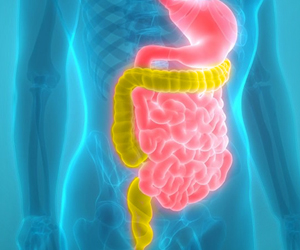
Associations of dietary intake and longitudinal measures of per- and polyfluoroalkyl substances (PFAS) in predominantly Hispanic young Adults: A multicohort study
Go to source).
Diet's Role in Accumulating PFAS in Body & Compromising Health
PFAS are known to be harmful to health: They can disrupt hormones, weaken bones, and increase disease risk. Sometimes called “forever chemicals” because they take so long to break down, PFAS are used in fabrics, furniture, and other household items—but they are also hard to get rid of. Recent tests now trace the chemicals to livestock, drinking water, and food packaging, but little is known about the extent of that contamination.‘The adverse effects of PFAS, commonly referred to as "forever chemicals," extend beyond environmental exposure to include dietary sources, emphasizing the need for public safety measures. #PFAS #foreverchemicals #diet #foodpackaging #holistichealth #medindia
’
Tweet it Now
Researchers studied two multiethnic groups of young adults, one a nationally representative sample and one primarily Hispanic. “To our knowledge, this is the first study to examine how dietary factors are associated with changes in PFAS over time,” said Jesse A. Goodrich, Ph.D., assistant professor of population and public health sciences at the Keck School of Medicine and the study’s senior author. “Looking at multiple time points gives us an idea of how changing people’s diets might actually impact PFAS levels.”
“We’re starting to see that even foods that are metabolically quite healthy can be contaminated with PFAS,” said Hailey Hampson, a doctoral student in the Keck School of Medicine’s Division of Environmental Health and the study’s lead author. “These findings highlight the need to look at what constitutes ‘healthy’ food in a different way.”
The researchers studied two groups of participants: 123 young adults from the Southern California Children’s Health Study (CHS), who were primarily Hispanic, and 604 young adults from the National Health and Nutrition Examination Study (NHANES), a nationally representative sample.
Each participant answered a series of questions about their diet, including how frequently they consumed various foods (such as processed meats, dark green vegetables and bread) and beverages (including sports drinks, tea and milk). They also reported how often they ate food prepared at home, at a fast-food restaurant or at a non-fast-food restaurant, which researchers used to infer contact with food packaging, which often contains PFAS.
Advertisement
Insights on the Innovative Clinical Trial
In the CHS group, participants who reported higher tea consumption during the first visit had higher levels of PFAS at the follow-up visit (one additional serving of tea was linked to 24.8% higher perfluoro- hexanesulphonic acid (PFHxS), 16.17% higher perfluoroheptanesulfonic acid (PFHpS) and 12.6 % higher perfluorononanoic acid (PFNA)). Those who reported more pork intake on their initial visit also had higher levels of PFAS at follow-up (one additional serving of pork was associated with 13.4 % higher perfluorooctanoic acid (PFOA)).Eating food prepared at home had the opposite effect: for every 200-gram increase in home-prepared food, perfluorooctanesulfonic acid (PFOS) levels were 0.9% lower at baseline and 1.6 % lower at follow-up. These findings are important because they not only reveal the presence of traditional PFAS, such as PFOA and PFOS but also more recently developed PFAS, including PFHxS and PFHpS.
Advertisement
“This really helped us determine that the associations we are seeing aren’t just true for one geographical location, but are actually applicable to people across the country,” Goodrich said.
Observing that links between PFAS levels and food products change over time suggests that dietary changes could impact PFAS levels in the body, Hampson said. The findings also suggest that public monitoring of certain products, such as beverages, could help identify and eliminate sources of contamination.
However, food packaging is more ubiquitous and may require a bolder approach. In 2023, California’s Attorney General issued an advisory letter requiring manufacturers of food packaging and paper straws to disclose PFAS levels in their products.
Goodrich, Hampson, and their team are now conducting research on the extent of PFAS contamination in popular tea brands, as well as a follow-up study on diet and PFAS levels in a multi-ethnic group of participants.
Reference:
- Associations of dietary intake and longitudinal measures of per- and polyfluoroalkyl substances (PFAS) in predominantly Hispanic young Adults: A multicohort study - (https://www.sciencedirect.com/science/article/pii/S0160412024000400?via%3Dihub)















